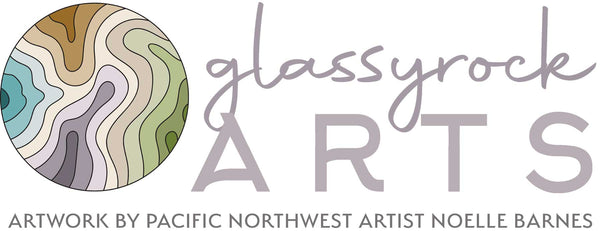
How Solder Holds Stained Glass Together
In the Tiffany method, a popular stained glass technique pioneered by Louis Comfort Tiffany, copper foil tape is often used to wrap the edges of the glass pieces before soldering. But what exactly is the chemistry behind the way solder adheres to copper foil tape? (A note on links - I only link to the products that I personally use!)
The Ingredients:
For this chemical reaction to occur - and to hold the glass together - four key ingredients are required: flux, copper foil, solder, and heat, in the form of a soldering iron.
The Role of Flux:

At the heart of soldering is the use of flux, a chemical agent that facilitates the bonding process. In the case of copper foil tape, the flux acts as a cleaning agent, preparing the surface for soldering by removing any oxidation or impurities that may inhibit adhesion. Flux is available as a paste (my favorite), gel, or liquid. It does a couple of other very cool things - including creating new chemical bonds and making the solder wetter so it can flow more smoothly.
Chemical Reactions at the Seams:
When the heat of the soldering iron comes into contact with the flux-coated copper foil tape, a series of chemical reactions occur at the interface between the solder, flux, and copper. The flux reacts with the copper oxide on the surface of the tape, forming a thin layer of copper fluoride or copper chloride, depending on the type of flux used. This layer serves as a barrier, preventing further oxidation, and allowing the solder to flow evenly across the surface.
Wetting and Capillary Action:
At the same time, as the solder is applied, it melts and flows over the surface of the copper foil tape, a process known as wetting. This occurs due to the phenomenon of capillary action, where the solder is drawn into the microscopic pores and irregularities of the surface, creating a strong and durable bond. Solder is a metal alloy typically composed of tin and lead; 60/40 and 50/50 combinations are the most commonly used in stained glass, although lead-free alternatives are also available (though pricier).
Metallurgical Bonding:

As the solder solidifies, it forms a metallurgical bond with the copper foil tape, creating a strong and durable connection between the glass pieces. This bond is achieved through a combination of mechanical adhesion, where the solder physically adheres to the surface of the tape, and diffusion bonding, where atoms from the solder and copper intermingle at the interface, creating a molecular-level bond.
What It Can and Can't Do:
Copper foil and solder are a beautiful combination when done well - and anyone who's tried to make stained glass knows it's difficult to get the solder seams right without a lot of practice. But they are also susceptible over time to moisture, high temperature differentials, vibration (such as windows and doors that open and close frequently), and the design of the pattern. When using this Tiffany method to create stained glass, make sure you consider the ultimate placement of the piece you're working on, its size, and how it will be used. You might want to consider whether lead came might be a better option, or if the copper foil tape might need some extra strengthening in the form of wire or copper stripping.
Got questions? Ask me! And thanks for reading.
